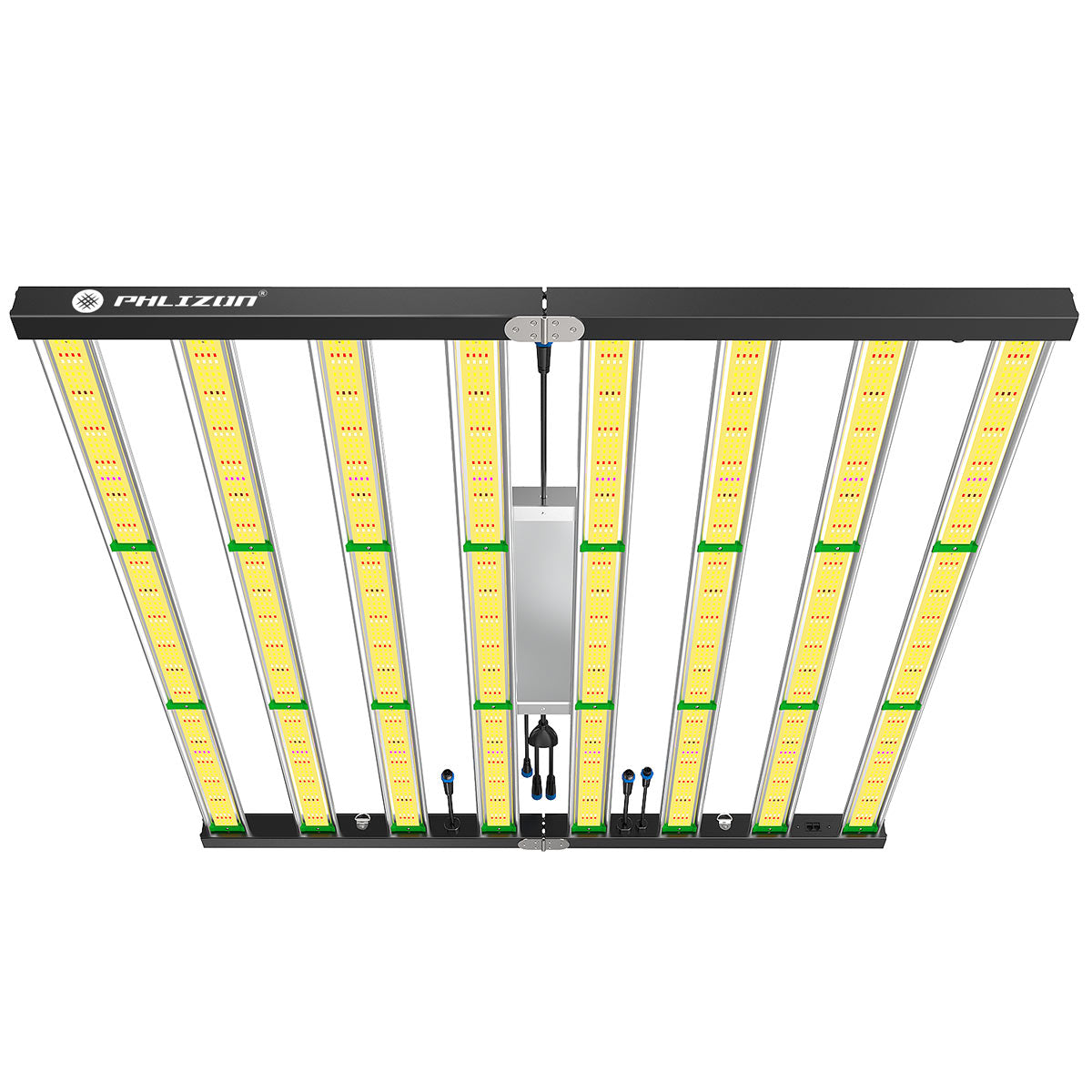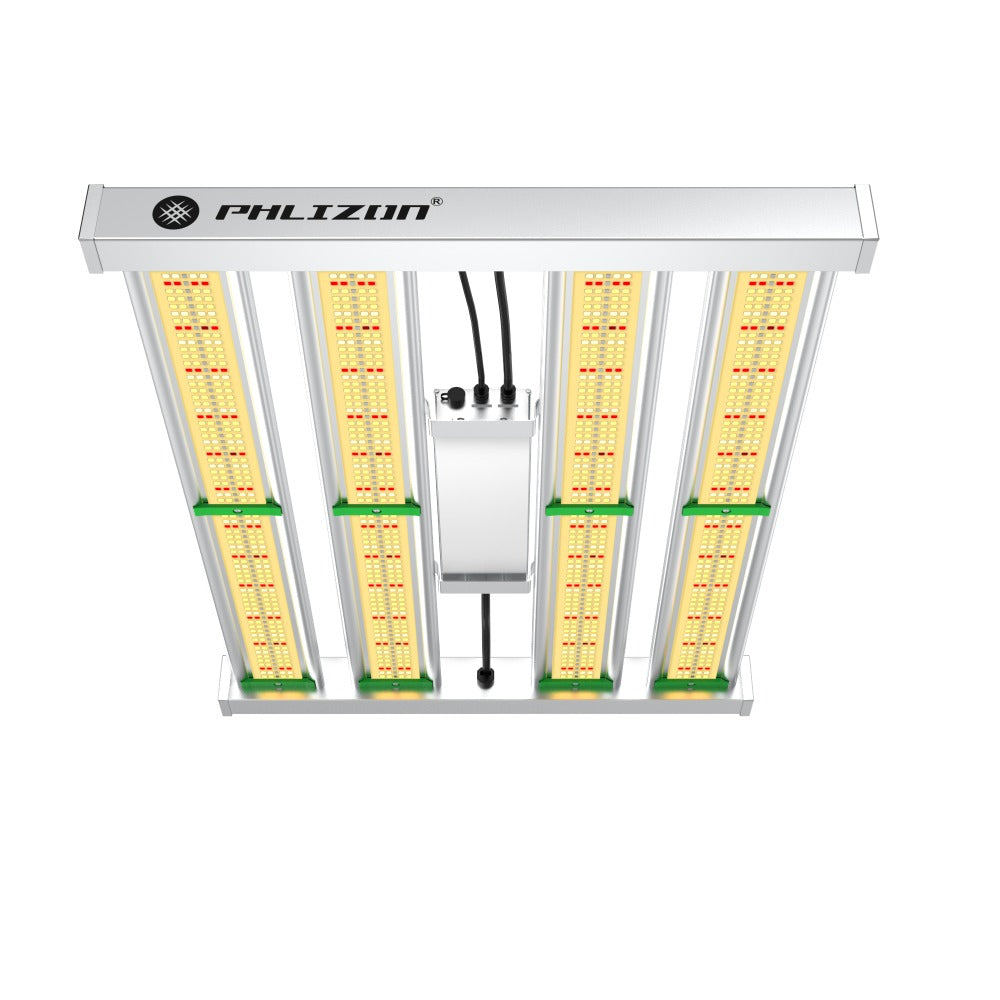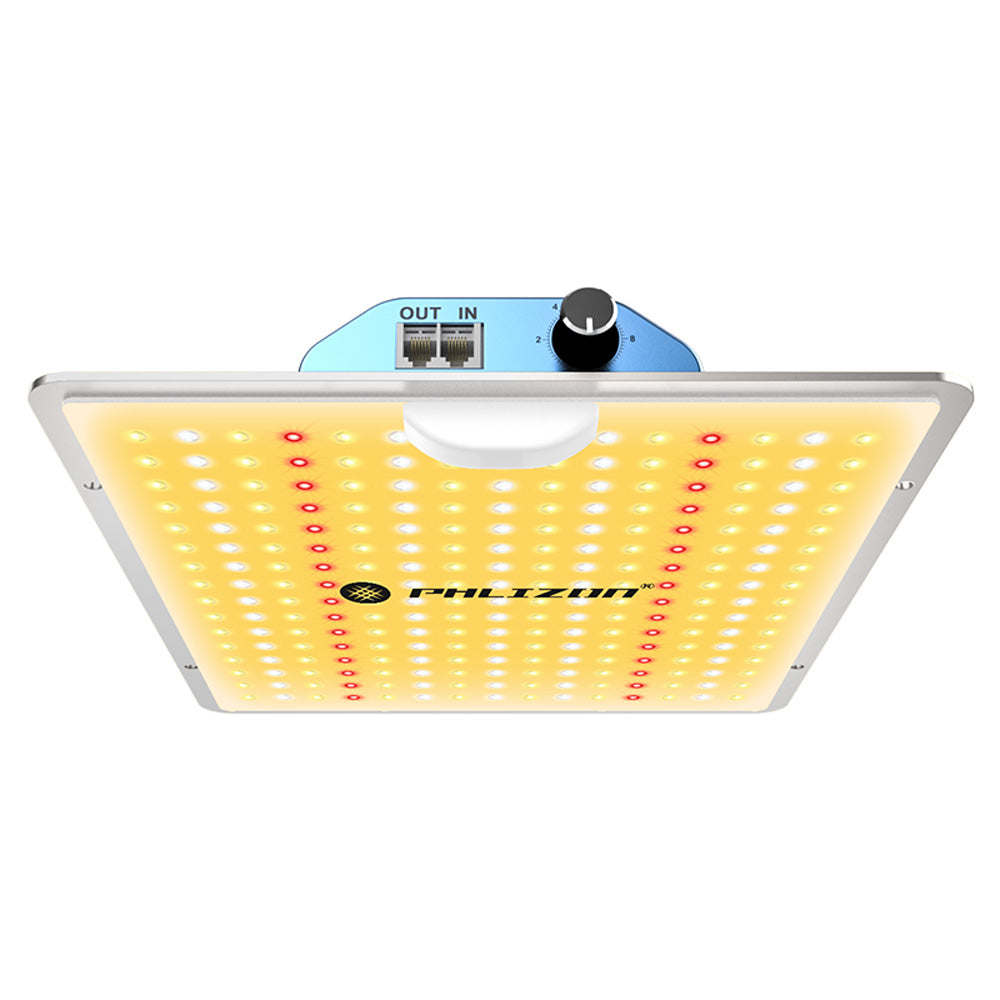Menu
Are Grow Lights Used for Zucchini Seed Starting?
Zucchini is a beloved summer squash, known for its prolific production and ease of growth, making it a favorite among beginner and seasoned gardeners alike. But when it comes to starting zucchini seeds, especially indoors, a common question arises: Are grow lights used for zucchini seed starting? The answer is a resounding yes, and this article will dive into why and how grow lights play a vital role in giving zucchini seedlings a strong start. We'll explore the benefits, practical tips, and best practices drawn from gardening wisdom across the web, culminating in a FAQ section to address common curiosities.
Why Use Grow Lights for Zucchini Seed Starting?
Zucchini plants have the highest light needs of any plant, so unless you have a totally unobstructed southern-facing window and plan on only growing in the summer, you’ll need a grow light. We recommend taking advantage of your bright window (sunlight is free and great for plants!) and supplementing it with a grow light. Plants rely on light to survive! Through the process of photosynthesis, plants harness energy from sunlight and convert it into chemical energy that is used to fuel their growth. In most cases, the amount of light a plant receives directly correlates to how vigorously it will grow. Using grow lights is an easy and excellent way to provide supplemental light and support plants where adequate natural sunlight is lacking.
Growing your own plants from seed is a great way to garden on a budget, but even the sunniest south-facing window typically isn't bright enough for indoor seed starting. You can cultivate strong, healthy vegetable, herb, and flower seedlings indoors by using grow lights. Without enough light, your seedlings will grow long and leggy as they attempt to reach the light source, producing skinny, weak stems. Plants raised under a grow light as seedlings grow stronger and more vigorous than those that were grown without. Grow lights shine down from above, encouraging seedlings to grow straight up, rather than bending over toward the light from a window.
The Science Behind Light and Zucchini Seedlings
Plants use light in the photosynthetically active radiation spectrum, which includes wavelengths ranging from 400 (violet) to 700 (red) nanometers. Typically, plants use more blue and blue-green light when they are seedlings, and more red light later on in their life cycles when they begin to flower and produce seeds. If you are just using grow lights to start seeds or to grow leafy vegetables, stick to lights that are labeled either as blue-green spectrum or balanced light spectrum. It is increasingly common for lights to be labeled “for greens and seeds” or “for flowers and fruit”. For seedlings that need to be planted very early, like peppers or tomatoes, more light is especially important. A seedling that is planted indoors just a couple of weeks before being transplanted outdoors can catch up outside, but a seedling that spends months indoors needs all of the light it can get to produce strong stems and to get a good head start on the growing season.
Zucchini seeds germinate in one to two weeks after sowing. They have a short growing season, and depending on the variety you choose, should mature in 40 to 55 days. Starting seeds indoors with grow lights can significantly improve your chances of success and give your plants a strong start for a bountiful harvest. Consistent Light: Zucchini seedlings need a lot of light to germinate and grow strong. Grow lights provide consistent, controlled light, even if you don't have sunny windows. Early Start: You can start zucchini seeds indoors several weeks before the last frost date, giving them a head start on the growing season. Controlled Environment: Grow lights allow you to control the amount of light and heat your seedlings receive, creating an optimal environment for healthy growth.
How to Use Grow Lights for Zucchini Seed Starting
To start your zucchini seeds indoors, you will need a few supplies. You will need a seed tray, a high-quality potting mix, zucchini seeds, and a grow light. It is important to choose a high-quality potting mix that has good drainage, as zucchini plants are susceptible to root rot if they are overwatered. Fill your seed tray with potting mix and sow your zucchini seeds according to the instructions on the packet. Place the tray in a warm, sunny spot or under a grow light. Zucchini seeds need warmth and light to germinate, so it is important to keep them in a warm, sunny spot until they sprout. Zucchini plants need at least 6 hours of sunlight per day, so make sure they are getting enough light. If you do not have a south-facing window, a grow light can be a great alternative. A grow light will provide your zucchini plants with the necessary light they need to grow and bear fruit.
Sow the seeds directly into the ground by putting two or three seeds in each hole positioned with the narrowest part of the seed facing down. Use the spray bottle to evenly water each zucchini seed. Set the seed trays under LED grow lights or in a sunny window. Monitor daily for moisture needs and signs of growth! Starting zucchini from seed is definitely an easy activity for gardeners of all experience levels. Zucchini grows quickly from seed. Plant 1 site in a 12″ / 5 gal container. In larger containers, space sites 24″ apart. For each site, plant 2 seeds 1″ deep. Keep the soil warm (68-95°F, ideally 70°F). Sprouts typically appear in 10 days but can be as quick as 7 days or as long as 14 days depending on your conditions.
Grow lights should be positioned close to the seedlings to avoid them stretching to the light and becoming leggy and weak. An adjustable light source that can be raised as the plants grow makes a perfect addition to your seed starting station. This can be as simple as inexpensive shop lights with full-spectrum bulbs, hung on chains that can be raised as the plants grow. Position the lights 2-3 inches above the seedlings, and move the lights up as the plants grow, keeping them always close—but not touching—the seedlings. Note that seedlings need 14 to 16 hours of light per day. You can turn grow lights on and off manually each morning and evening, but an outlet timer is much more convenient and will ensure that your lights turn on and off at the same time each day. Make sure that your plants also have at least 8 hours of dark each day as well.
Choosing the Right Grow Lights
Choosing the best grow lights for seed starting is crucial for growing healthy seedlings. Most gardeners use either fluorescent lights or light-emitting diode (LED) bulbs. For many years, fluorescent shop lights were the go-to seed starting bulbs for gardeners, but LEDs have quickly replaced them as the standard choice. LEDs are usually more expensive than fluorescent bulbs, but they are very energy-efficient and long-lasting. They also do not produce excess heat and have become available in a wide variety of shapes and sizes. Both types are typically available at local hardware stores, online and at garden centers.
Grow lights should be full-spectrum, meaning they put out similar wavelengths of light as those emitted by the sun, or emit blue and red wavelengths specifically. Full-spectrum grow lights provide the same colors that mimic daylight, perfect for starting your plants. Look for grow lights for seedlings. Placement: Place the lights about 2-4 inches above the seedlings. Light Schedule: Provide 14-16 hours of light per day. If you have a small space and are only starting one or two trays of seeds, an LED grow light bulb may be enough. This kind of lighting setup only costs around $12, not counting a fixture to hold the bulbs. If you want to start several trays of seeds and have the space, you can purchase a ready-made seed starting rack fitted with lights for $200 or more, or purchase the lights alone and turn a bookshelf or wire rack into a seed starting shelf.
Practical Tips for Success
Zucchini and other summer squashes prefer warm soil. At 24°C, seeds will germinate in 5 or 6 days. Use a heat mat if you have one, or place pots in a warm spot like the top of the fridge for germination. Take care not to over water your seedlings. Soil should be moist like a damp sponge, but not soggy. Place seedlings under lights after germination, which is crucial for the growth of healthy seedlings. Seedlings require a minimum of 14 hours of light each day. Leave a fan blowing on your young seedlings as they grow to help to grow heartier plants and to reduce some seedling diseases. Research has shown that stem diameter can be increased by providing seedlings with constant air movement from an oscillating fan – or by lightly brushing seedling tops with a tea towel or stick at least 20 times daily.
Once your zucchini seeds have sprouted, you can move them to a south-facing window or under a grow light. Once your zucchini plants have grown large enough, you can transplant them to larger pots. Choose a pot that has drainage holes and is large enough to accommodate the growing zucchini plant. Fill the pot with potting mix and transplant your zucchini plant, making sure to water it thoroughly. Zucchini plants need plenty of room to grow, so it is important to choose a pot that is large enough. As your zucchini plant grows, you may need to transplant it to an even larger pot.
Benefits Beyond the Basics
One of the best ways to prevent leggy seedlings and grow the most healthy, successful plants is by using grow lights inside. I hate to say it, but more often than not, a bright sunny window alone won’t provide enough light for starting seeds indoors. Especially in the winter months when daylight hours are already scarce; the time most gardeners start seeds for the spring and summer season ahead. The ample light provided by grow lights will keep seedlings short, stocky, and strong. Starting seeds indoors with grow lights is the best way to get more consistent results. Here's the thing: Seedlings grown indoors without artificial light tend to be leggy (or tall and narrow without many leaves). Or they lean over too much because they're looking for sunlight. Or they just grow very slowly. It's rare for seedlings to get enough light to be fully healthy and robust from just sunlight indoors.
Zucchini is an excellent plant for beginners. They are sturdy, easy to grow, require little maintenance and most of all: they give you so much food. If you look after your zucchini, it will keep producing until the first frost hits. I can highly recommend them to anyone no matter how much or little space you have. Starting zucchini seeds indoors with grow lights not only ensures a healthy start but also allows you to extend the growing season, especially in cooler climates where outdoor planting might be delayed.
Frequently Asked Questions (FAQ)
1. Do I really need grow lights for zucchini seeds, or can I just use a sunny window?
While a sunny, south-facing window can work in a pinch, it’s often not enough, especially in late winter or early spring when days are shorter and light is weaker. Grow lights provide consistent, intense light that prevents leggy growth and ensures sturdy seedlings. If your window gets at least 6-8 hours of direct sun, you might get by, but supplementing with grow lights is a safer bet.
2. How long should I keep grow lights on for zucchini seedlings?
Zucchini seedlings need 14-16 hours of light daily to thrive. Use a timer to automate this—turn them on in the morning and off at night to mimic a natural day cycle. They also need 8 hours of darkness for proper rest.
3. What type of grow light is best for zucchini?
Full-spectrum LED grow lights are ideal because they mimic sunlight, are energy-efficient, and don’t overheat. Fluorescent T5 lights are a budget-friendly alternative that also work well. Aim for lights labeled for seedlings or greens, focusing on blue-green wavelengths.
4. Can I start zucchini seeds indoors without a heat mat if I use grow lights?
Yes, but germination might take longer. Zucchini seeds prefer soil temperatures of 68-95°F (ideally 70°F). If your room is warm (like near a radiator or on top of a fridge), you can skip the heat mat. Grow lights alone don’t provide enough heat for germination but are crucial post-sprouting.
5. How close should grow lights be to zucchini seedlings?
Keep lights 2-4 inches above the seedlings. Too far, and they’ll stretch; too close, and they might burn. Adjust the height as they grow to maintain this distance, ensuring even light coverage.
6. When should I start zucchini seeds indoors with grow lights?
Start 4-6 weeks before your last frost date. This gives seedlings time to develop strong roots and leaves before transplanting outdoors when soil warms to 65-70°F. Check your local frost dates to time it right.
7. Will grow lights help if I want to grow zucchini indoors year-round?
Yes, but zucchini plants get large and need lots of light, water, and space, making them tricky for full indoor growth. Grow lights can sustain seedlings or small plants, but for fruiting, you’d need a big container (at least 5 gallons) and 12-14 hours of light daily.
Conclusion
Grow lights are indeed used for zucchini seed starting, offering a reliable way to kick off the growing season with robust, healthy seedlings. From providing consistent light to preventing leggy growth, they address the limitations of natural sunlight indoors. Whether you’re a beginner eager to try your hand at zucchini or a seasoned gardener looking to optimize your harvest, integrating grow lights into your seed-starting routine can make all the difference. With the right setup—full-spectrum lights, proper timing, and a bit of care—you’ll be well on your way to enjoying a bumper crop of tender, delicious zucchini.
Featured blog
- Choosing a selection results in a full page refresh.

















